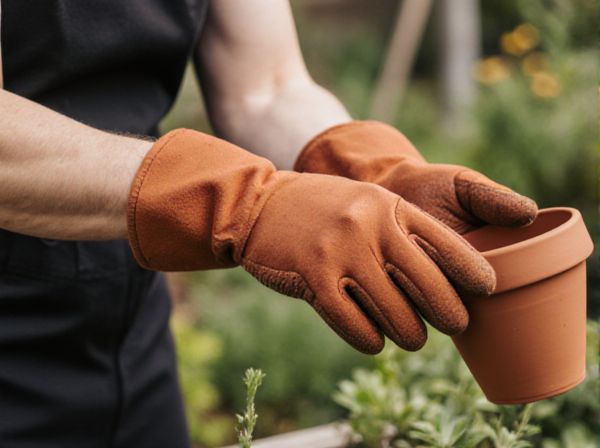
Terra cotta vs plastic containers Illustration
Terra cotta containers provide natural breathability and better moisture regulation, promoting healthier root growth and preventing overwatering issues commonly found with plastic containers. Plastic containers offer durability, lighter weight, and retain moisture longer, making them ideal for plants requiring consistently moist soil. Choosing between terra cotta and plastic depends on plant type, watering needs, and environmental conditions.
Table of Comparison
| Feature | Terra Cotta Containers | Plastic Containers |
|---|---|---|
| Material | Natural clay, porous | Synthetic polymer, non-porous |
| Breathability | High breathability, allows airflow | Low breathability, traps moisture |
| Weight | Heavy and sturdy | Lightweight and portable |
| Durability | Prone to cracking, fragile | Highly durable, impact-resistant |
| Water Retention | Dries out quickly due to porosity | Retains moisture longer |
| Temperature Resistance | Withstands heat well, poor frost resistance | Variable, some types may warp under heat |
| Cost | Moderate price | Generally low cost |
| Aesthetic | Natural, rustic appearance | Wide range of colors and shapes |
| Environmental Impact | Biodegradable, eco-friendly | Non-biodegradable, potential pollution |
Understanding Terra Cotta and Plastic Containers
Terra cotta containers are porous, allowing air and moisture to pass through the walls, which promotes healthier root growth and prevents overwatering. Plastic containers are non-porous, retaining moisture longer and reducing the frequency of watering but potentially increasing the risk of root rot if drainage is inadequate. Understanding these material properties helps gardeners choose the right container based on plant needs and environmental conditions.
Key Differences in Material Composition
Terra cotta containers are made from natural clay that is fired at high temperatures, resulting in a porous, breathable material ideal for plant roots to receive oxygen and moisture. Plastic containers consist of synthetic polymers such as polyethylene or polypropylene, which are non-porous, lightweight, and retain water more effectively. The inherent porosity of terra cotta allows for better drainage and aeration, while plastic containers offer durability and moisture retention without the risk of cracking.
Pros and Cons of Terra Cotta Pots
Terracotta pots offer excellent breathability, allowing air and moisture to pass through the porous material, which helps prevent root rot and promotes healthy plant growth. However, they tend to dry out quickly, requiring more frequent watering compared to plastic containers. Additionally, terracotta is fragile and can crack easily in freezing temperatures, limiting its durability outdoors.
Pros and Cons of Plastic Pots
Plastic pots offer lightweight durability and excellent water retention, making them ideal for indoor and outdoor gardening where frequent watering is a concern. They are more affordable and available in a wide variety of sizes and colors, providing versatility for different plant species. However, plastic containers may have poor breathability compared to terracotta, potentially leading to root rot in overwatered plants and environmental concerns due to their non-biodegradable nature.
Drainage Efficiency: Terra Cotta vs Plastic
Terra cotta containers offer superior drainage efficiency due to their porous nature, allowing excess moisture to escape and preventing root rot. In contrast, plastic containers retain water longer, which can lead to poor aeration and increased risk of overwatering. The natural breathability of terra cotta promotes healthier root systems by balancing moisture and airflow more effectively than plastic.
Insulation and Temperature Control
Terra cotta containers offer superior insulation due to their porous nature, allowing air circulation that helps moderate soil temperature and prevent overheating. Plastic containers retain heat more quickly, which can lead to root stress in hot weather but provide better warmth in cooler climates. Choosing terra cotta enhances temperature regulation through natural breathing properties, while plastic containers offer less insulation but greater moisture retention.
Weight and Portability Factors
Terracotta containers are significantly heavier than plastic containers, which impacts portability especially for larger pots used in gardening or decor. Plastic containers offer lightweight properties that enhance ease of movement and reduce strain during transport or rearrangement. The weight difference directly affects user convenience, making plastic more suitable for frequent relocation and terracotta preferable for stable, long-term setups.
Aesthetics and Garden Design
Terra cotta containers offer a classic, natural aesthetic with their warm earthy tones and porous texture, enhancing garden design by blending seamlessly with plants and natural surroundings. Plastic containers provide versatility in colors and shapes, allowing for modern, bold garden styles and easy customization to fit various design themes. Choosing between terra cotta and plastic impacts the visual harmony and style statement of outdoor spaces, balancing traditional charm with contemporary appeal.
Eco-Friendliness and Sustainability
Terra cotta containers are highly eco-friendly due to their natural, biodegradable composition and minimal processing, reducing environmental impact. Plastic containers, often derived from petroleum, contribute to pollution and landfill waste, posing challenges for sustainability. Choosing terra cotta supports sustainable gardening by promoting soil breathability and reducing reliance on non-renewable resources.
Best Uses: Choosing the Right Container for Your Plants
Terra cotta containers excel in breathability and moisture regulation, making them ideal for plants that prefer drier soil, such as succulents and herbs. Plastic containers retain moisture longer and are lightweight, suitable for moisture-loving plants like ferns and tropical flowers, as well as for easy mobility. Selecting the right container depends on the plant's water needs, weight considerations, and environmental conditions.
Terra cotta vs plastic containers Infographic

 gardendif.com
gardendif.com